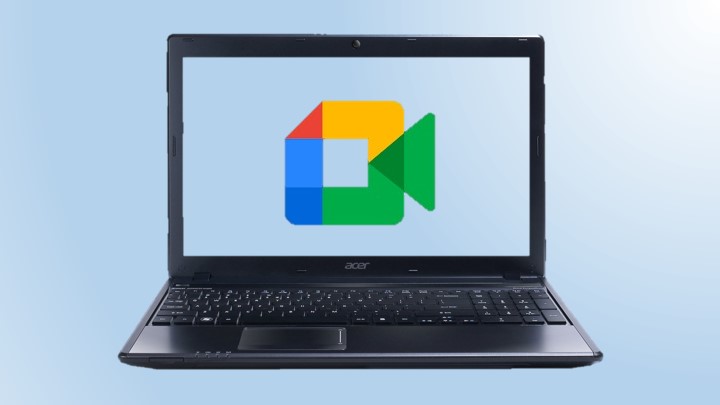Last Updated on June 24, 2023 by Uncle Pat Ugwu
In today’s fast-paced digital world, education has undergone a significant transformation. With the advent of technology, traditional classrooms have expanded beyond physical boundaries, enabling students and educators to connect, collaborate, and learn remotely.
Although we have other video conference call apps like Zoom, one such powerful tool that has revolutionized the way we approach education is Google Meet.
In this comprehensive article, we will explore the various aspects of Google Meet for Education and delve into its remarkable features, benefits, and how it can enhance the learning experience for students and educators alike.
Let’s begin by first understanding what Google Meet is all about.
What is Google Meet?
Google Meet is a video conferencing and collaboration platform developed by Google. Originally designed for business purposes, Google Meet has gained immense popularity in the education sector. It offers a seamless and secure environment for virtual meetings, allowing participants to interact face-to-face, share screens, and collaborate in real time.
Although Google Meet was primarily built for business, Google Meet for Education has grown to become a useful tool for teaching and learning.
The Power of Virtual Classrooms
1. Enhancing Communication and Collaboration
Google Meet brings students and educators together, irrespective of their geographical locations. Through high-quality video and audio capabilities, it creates a virtual classroom environment where teachers can deliver engaging lessons, students can actively participate, and discussions can take place in real-time.
This fosters effective communication and collaboration, promoting a dynamic learning experience.
2. Flexible Scheduling and Accessibility
One of the key advantages of Google Meet for Education is its flexibility. Teachers can schedule virtual classes, set reminders, and share invitations with students effortlessly. Moreover, Google Meet is accessible across various devices, including computers, laptops, tablets, and smartphones.
This ensures that students can join classes from anywhere, making education accessible to all, regardless of their circumstances.
Key Features of Google Meet for Education
1. Secure and Private
Google Meet prioritizes security and privacy, especially in an educational setting. With encryption in transit and stringent privacy controls, educators can create a safe online environment for their students. Meeting links and access controls can be customized, ensuring only authorized participants can join the virtual class.
We dedicated an article on cybersecurity for online learners. Try and read it.
2. Screen Sharing and Collaboration
Collaboration is an essential aspect of the learning process. Google Meet facilitates seamless screen sharing, allowing teachers to present slideshows, educational videos, or other relevant materials. Students can also share their screens, enabling interactive discussions and peer-to-peer learning.
3. Real-Time Captions and Translations
To cater to diverse student populations, Google Meet offers real-time captions and translations. This feature benefits students with hearing impairments or non-native English speakers. It promotes inclusivity within the virtual classroom, ensuring every student can actively engage and comprehend the shared content.
4. Integration with Google Workspace for Education
Google Meet seamlessly integrates with Google Workspace for Education, a suite of productivity tools tailored for educational institutions. This integration enables teachers to utilize applications like Google Docs, Sheets, and Slides within the virtual classroom, fostering collaboration and streamlining workflows.
Benefits of Using Google Meet for Education
1. Enhanced Engagement and Participation
Virtual classrooms powered by Google Meet provide an interactive learning environment that captivates students’ attention. Through live video sessions, real-time discussions, and collaborative activities, students actively engage with the subject matter, leading to enhanced comprehension and participation.
2. Global Connectivity and Cultural Exchange
Google Meet transcends borders and time zones, enabling students to connect with peers from around the globe. This global connectivity opens doors to cultural exchange, allowing students to gain diverse perspectives and broaden their horizons. It promotes inclusivity, empathy, and intercultural understanding among learners.
3. Time and Cost Efficiency
Virtual classrooms eliminate the need for physical travel, reducing transportation costs and saving valuable instructional time. Teachers can allocate more time to delivering content and addressing students’ queries. Additionally, recorded sessions can be shared for future reference, ensuring students can revisit the material at their own pace.
4. Easy Monitoring and Assessment
Google Meet provides tools for teachers to monitor student engagement and assess learning outcomes. Educators can track attendance, evaluate participation levels, and administer quizzes or assignments in real-time. This data-driven approach allows for personalized feedback, identifying areas of improvement, and adapting teaching strategies accordingly.
5. Mobile Compatibility
In the era of mobile devices, flexibility in accessing educational content is crucial. Google Meet is available as a mobile app, compatible with both Android and iOS devices. This allows students to join classes or meetings on the go, promoting continuous learning beyond the confines of a physical classroom.
6. Training and Support
Google provides comprehensive training resources and support for educators using Google Meet. The Educator Center offers tutorials, guides, and best practices to maximize the platform’s potential in an educational setting. The availability of a dedicated support team ensures prompt assistance for any technical queries or issues.
Final Thoughts
Google Meet for Education has transformed the educational landscape, empowering educators to deliver engaging and interactive lessons, and enabling students to learn beyond physical boundaries. With its powerful features, secure environment, and integration with Google Workspace for Education, Google Meet offers a comprehensive solution for virtual classrooms.
Frequently Asked Questions (FAQs)
Is Google Meet Free For Education?
Yes, Google Meet is free for schools and educational institutions with a G Suite for Education account.
Is Google Meet Safe For Students?
Yes, Google Meet is safe for students as it has a number of security features, including end-to-end encryption, meeting access controls, and measures to prevent unauthorized access and disruption. There are also Google Classroom Games that can help to engage students.
Can Google Meet be used for large-scale virtual events?
Yes, Google Meet can accommodate a large number of participants, making it suitable for virtual events, conferences, and webinars.
Is Google Meet only for educational institutions?
No, while Google Meet is widely used in education, it is also utilized by businesses, organizations, and individuals for various communication needs.
Can Google Meet be accessed offline?
No, Google Meet requires an internet connection for real-time video conferencing and collaboration.
Are there any age restrictions for using Google Meet?
Google Meet is designed for users aged 13 and above. However, educational institutions can comply with local regulations and implement additional safeguards for younger students.
Does Google Meet provide real-time language translation?
Currently, Google Meet does not offer built-in real-time language translation, but participants can use third-party tools or features like closed captioning for multilingual communication.






